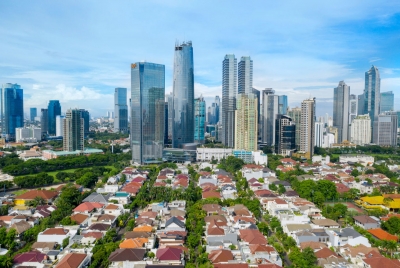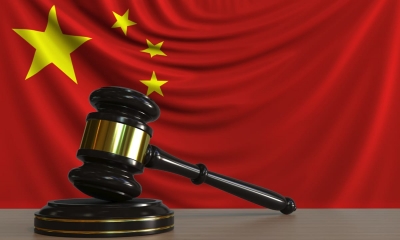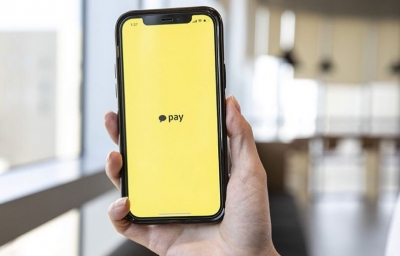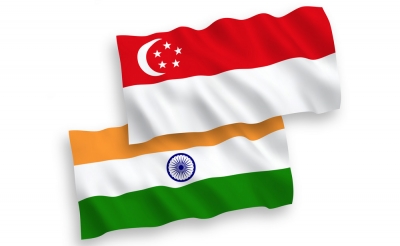Latest Insight
- Why cash is still prevalent in Asia
- Japan steps up green finance efforts
- South Korea charts middle path on crypto
- Should Grab and GoTo merge?
- Singapore pushes ahead with fintech-driven sustainability
- Digital banks in South Korea continue to thrive
- Billease is the rare profitable BNPL firm
- Fintech sector in Pakistan faces mounting challenges
- Where digital banks in Asia can make a difference
- Cashless payments jump in Vietnam
Latest Reports
-
Breaking Borders
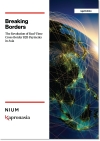 Despite progress in payment systems, the absence of a unified, cross-border Real-Time Payments (RTP) network means that intermediaries play a crucial role in facilitating connectivity. This report examines the ongoing complexities, challenges, and initiatives in creating a seamless payment landscape across Asia. Innovate to Elevate
Despite progress in payment systems, the absence of a unified, cross-border Real-Time Payments (RTP) network means that intermediaries play a crucial role in facilitating connectivity. This report examines the ongoing complexities, challenges, and initiatives in creating a seamless payment landscape across Asia. Innovate to Elevate In the dynamic and diverse financial landscape of the Asia-Pacific (APAC) region, banks are at a pivotal juncture, facing the twin imperatives of innovation and resilience to meet evolving consumer expectations and navigate digital disruption. Catalyzing Wealth Management In The Modern Era
In the dynamic and diverse financial landscape of the Asia-Pacific (APAC) region, banks are at a pivotal juncture, facing the twin imperatives of innovation and resilience to meet evolving consumer expectations and navigate digital disruption. Catalyzing Wealth Management In The Modern Era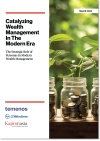 Hyper-personalized wealth management presents a paradigm shift from traditional models relying on static, generalized segments. Developing tailored investor personas based on psychographics, behaviours and fluid financial goals enables financial institutions to deliver rich and tailored customer experiences that resonate with next-generation priorities.
Hyper-personalized wealth management presents a paradigm shift from traditional models relying on static, generalized segments. Developing tailored investor personas based on psychographics, behaviours and fluid financial goals enables financial institutions to deliver rich and tailored customer experiences that resonate with next-generation priorities.
Events
| April 23, 2024 - April 25, 2024 Money 2020 Asia 2024 |
| October 21, 2024 - October 24, 2024 Sibos Beijing |
| November 06, 2024 - November 08, 2024 Singapore Fintech Festival |
Given that Indonesia is Southeast Asia’s largest economy, the decisions it makes about digital banking will have a large effect on fintech development in the region. To date, Jakarta has moved cautiously, despite the pandemic-driven transition to online banking that has swept the region. There are signs, however, that Indonesian regulators are keen to get the ball rolling. They will take a somewhat different approach than their counterparts in Singapore, the Philippines and Malaysia though.
All good things come to an end, and sometimes the end is long and drawn out. Such is the state of the latest fintech crackdown in China, which has evolved into an all-out effort to reign in Big Tech/platform companies. The tightening of supervision over firms like Ant Group and Tencent represents a major escalation over prior regulatory campaigns, which focused on cryptocurrency and peer-to-peer (P2P) lending. This time, Beijing is keen to clip the wings of the firms that have come to dominate its once-booming fintech sector. Not all of them are equally affected though.
The delay of Kakao Pay’s US$1.3 billion IPO signifies a toughening regulatory landscape for the company and fintech overall in South Korea. For years, Kakao's fintech business in South Korea grew largely unfettered. Neither incumbents nor digital competitors – there were very few – posed a serious challenge to the firm, while regulators seemed content to take a relatively hands-off approach to its digital finance business. That’s all over now. What remains to be seen is whether this is a bump in the road or a harbinger of a rough ride to come.
Just a few months into its digital bank fast-tracking experiment, the Philippines decided to slow things down by limiting the number of digital bank licenses to seven for the next three years, effective September 1. Interest in the digibanking licenses has been strong among both digital upstarts and incumbent lenders, perhaps even stronger than the Philippine central bank (BSP) had expected. The newest winner – and perhaps the last for some time – in the country’s digibanking race is Voyager Innovations’ PayMaya, one of the Philippines’ leading e-wallets.
In recent years, Asian countries have begun experimenting with instant cross-border payments on alternate payment rails, as covered in depth in a recent white paper by Kapronasia and ACI Worldwide. The idea is to enable instant, affordable and transparent payment flows using state-of-the-art digital technology. While much of the activity has been in Southeast Asia, India is an important player in this space as well given the prominence of its United Payments Interface (UPI) platform. The advent of the link-up between Singapore’s PayNow and UPI – slated to go live by July 2022 – marks an important step forward for real-time cross-border payments in the region.
Jakarta-based Xendit is Southeast Asia’s latest fintech unicorn, hitting a US$1 billion valuation after a Series C fundraising round that raised US$150 million led by Tiger Capital Management with participation from returning investors Accel, Amasia and Goat Capital. It has now raised a total of US$238 million. Xendit is best known for its digital payments infrastructure.
Singapore-based Nium became Southeast Asia’s first B2B payments unicorn in late July following a series D funding round that raised more than US$200 million. Nium is using that substantial capital injection to support an ambitious international expansion plan that includes the United States, Europe and India.
PayPal has long been one of the world’s preeminent online payment companies, but to stay at the forefront of the industry it needs to capture new market segments and build a larger presence in Asia Pacific, the fastest-growing region for digital finance. Targeted acquisitions will be integral to PayPal’s strategy, hence the recent purchase of the Japanese buy now, pay later (BNPL) platform Paidy for US$2.7 billion.
It is hard to believe that during the first half of 2021 Chinese IPOs in the United States raised a record US$12.4 billion, per Dealogic’s estimates. That was the boom before the bust, which had been brewing for a long time but came to the fore with the disastrous debut of Didi Chuxing on the NYSE. Like Alibaba’s nixed IPO heralded a widespread regulatory crackdown on fintech, Didi’s is doing the same for Chinese IPOs overseas.
Ant Group-backed Mynt has grown expeditiously thanks to the success of its e-wallet GCash in the Philippines. In January, Mynt closed a funding round that raised US$175 million and brought the company close to unicorn status. In late July, Mynt’s chief commercial officer Frederic Levy told Nikkei Asia that the company was aiming to become a “double unicorn” – with a valuation of US$2 billion. But it is unclear if Mynt can maintain the same level of growth now that the Philippines has five genuine digital banks.
More...
Never short of ambition, Revolut is aiming for an Australia banking license roughly a year after formally launching its app Down Under. The UK neobank unicorn is in discussions with the Australia Prudential Regulation Authority (APRA) as it seeks approval to take customer deposits and provide lending services.
With the Australian buy now, pay later (BNPL) segment increasingly crowded, some of the biggest players are searching for greener pastures overseas. While Afterpay has been the most aggressive in terms of global expansion, its rival Zip (Australia’s No. 2 pure-play BNPL firm) is catching up. Having already expanded to New Zealand, the U.S., Canada, Mexico and the UK, Zip is now foraying into Africa with the acquisition of South African payments startup Payflex.
Digital banks are fast becoming a fixture of the Asia-Pacific fintech boom, in many ways a manifestation of Big Tech’s desire to become Big Fintech. In contrast to the United States and Europe, where ascendant digital lenders are usually pure-play operations that began as humble startups, APAC has an increasing number of so-called digibank startups backed by the region’s largest tech companies and some major incumbent financial services firms.
Sea Group just can’t lose when it comes to investor sentiment, even though the company’s losses widened on an annual basis to US$433.7 million in the second quarter from US$393.5 million a year earlier. The day before it reported Q2 earnings, Sea’s share price was about US$291 and as of August 23 it had reached US$315. Over the past year, the stock has risen more than 105% while Sea’s market cap now stands at US$168 billion.
The Philippines has returned to an unenviable position: It is once again one of the only East Asian countries on the Financial Action Task Force’s (FATF) Grey list, alongside Cambodia. Countries on the grey list have been flagged by FATF for insufficient anti-money laundering and/or counterterrorism financing controls. Being on the list creates regulatory headaches for financial institutions – such as higher interest rates and processing fees – and can be detrimental to a country’s business environment.

